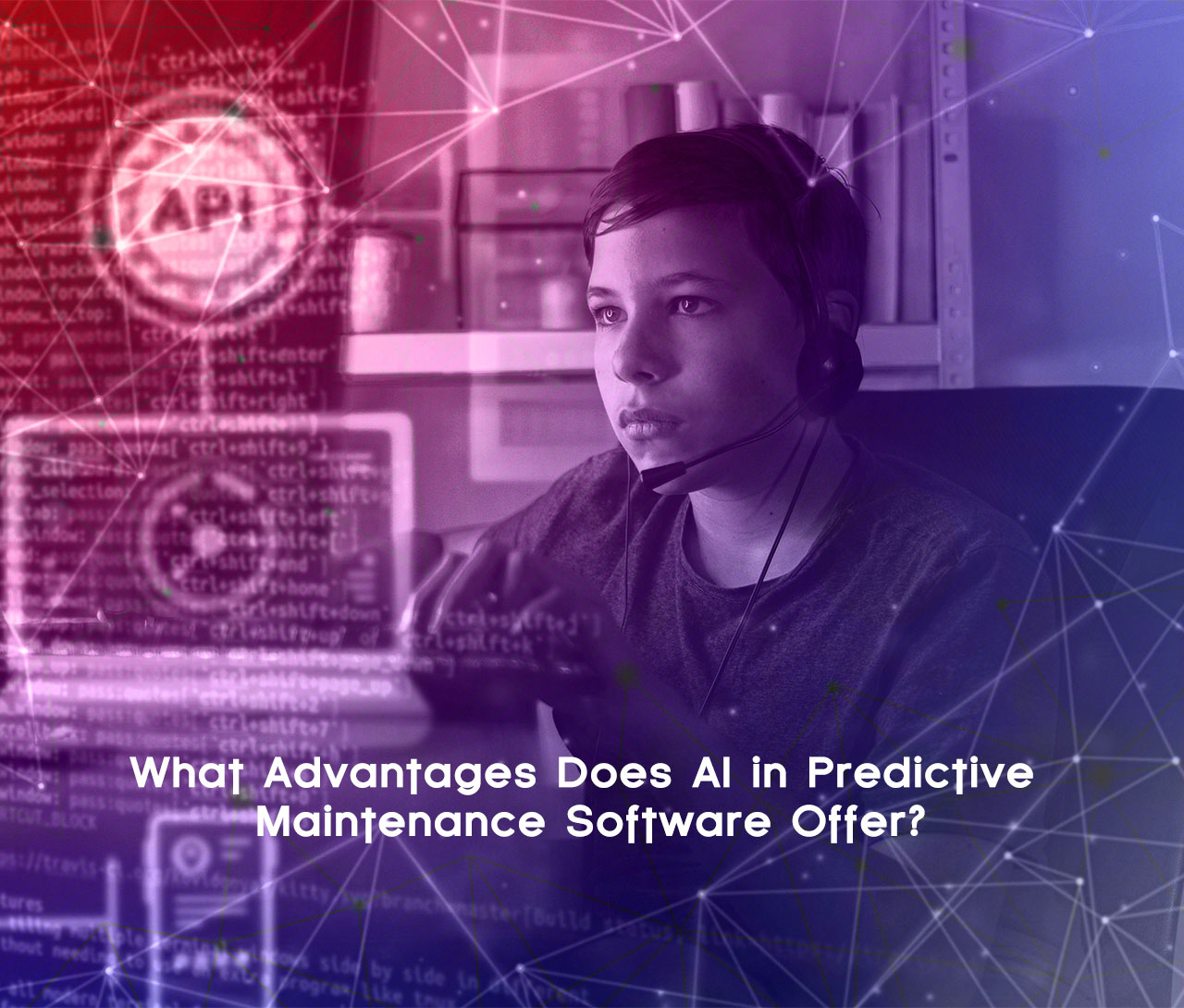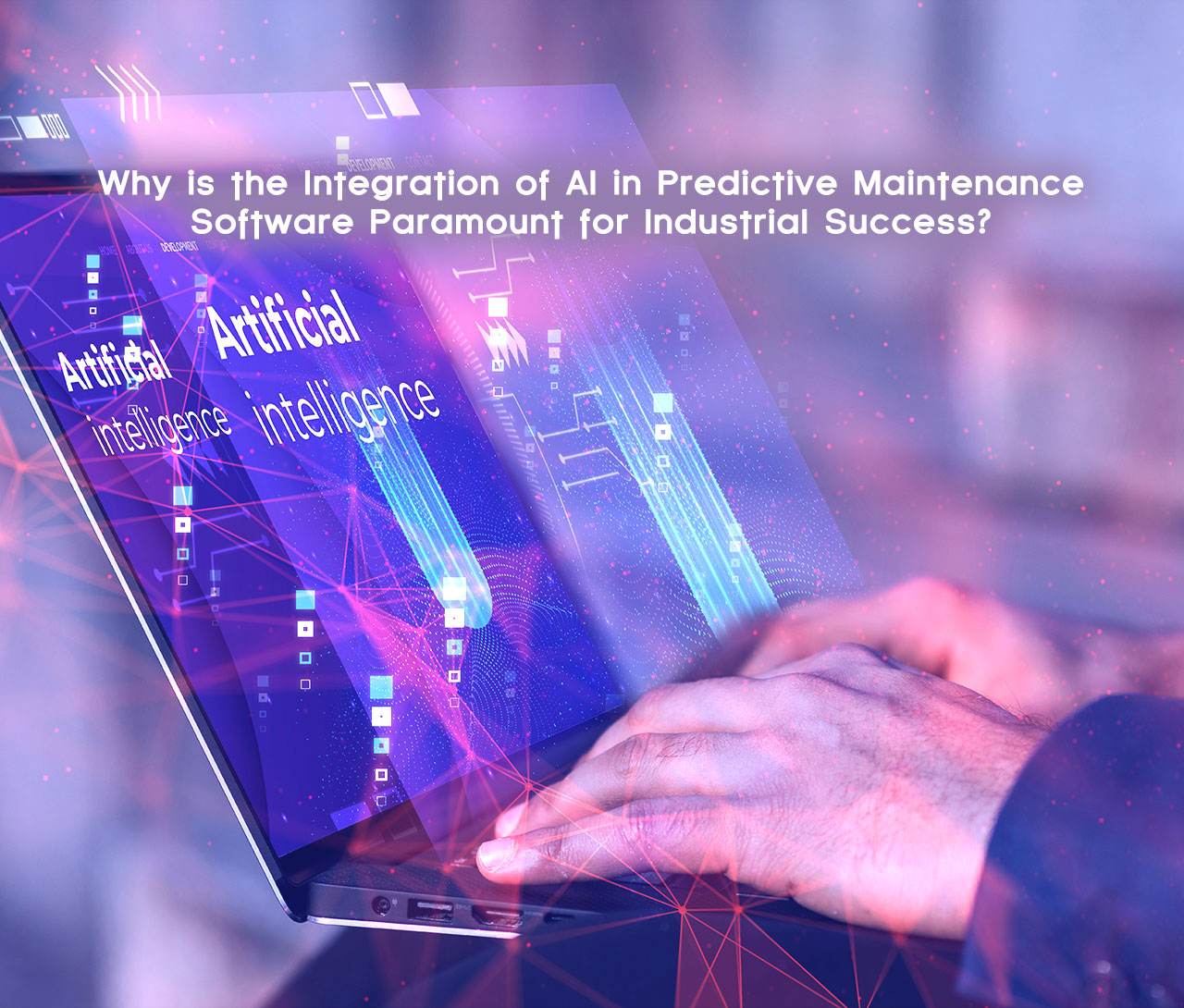Picture a world where machines communicate their needs, where data serves as the guiding compass for maintenance decisions, and where downtime becomes the exception rather than the rule. Enter AI in predictive maintenance software—a realm where artificial intelligence injects vitality into the once-static realm of equipment upkeep.
From manufacturing plants to energy grids, and healthcare institutions to logistics hubs, organizations grapple with the repercussions of unexpected failures in critical systems. This article explores the evolving role of AI in predictive maintenance, unveiling how machine learning algorithms within broader AI frameworks enable the prediction of failures before they occur.
Let’s get started!
What is AI in Predictive Maintenance?
AI in predictive maintenance software leverages extensive data to proactively forecast and address potential issues, averting operational, procedural, service, or system breakdowns. It enables businesses to preemptively address potential failures and take preventive measures to ensure uninterrupted services. This is accomplished by evaluating numerous factors that indicate the present condition of an asset, predicting outcomes based on patterns of usage, and alerting maintenance teams in advance about potential equipment malfunctions.
Based on the findings of the International Society of Automation, machine failure causes a global loss of $647 billion annually. In order to reduce expenses and enhance productivity, companies in various industries such as manufacturing, aerospace, and energy are revamping their maintenance procedures. By leveraging artificial intelligence and machine learning, organizations can implement predictive maintenance strategies to analyze extensive sensor data and identify potential equipment malfunctions before they occur. Unlike traditional preventive maintenance methods that rely on predetermined schedules or time intervals, predictive maintenance allows businesses to proactively address issues and prevent costly downtime.
Is the Role of AI in Predictive Maintenance Software Revolutionizing Industrial Maintenance?
The primary focus of AI in predictive maintenance software services encompasses three key roles, including:
1. Anomaly Detection
AI utilizes maintenance data from sensors and equipment to analyze and establish standard operational patterns. Subsequently, it identifies any anomalies that may signal potential issues, enabling timely scheduling of maintenance before significant problems occur. These models can identify the equipment that is most susceptible to failure and promptly alert the maintenance teams.
2. Pattern Recognition
Machine learning and artificial intelligence (AI) algorithms analyze extensive data collected over time to identify intricate patterns. Through this analysis, they can anticipate and predict when particular components are likely to deteriorate. This information is crucial for taking proactive measures such as preemptively replacing or maintaining those components, enabling the prevention of unexpected downtime.
3. Optimization of Maintenance Strategies
Through data analysis, AI leverages usage patterns, historical performance, and real-time conditions to optimize maintenance schedules. By doing so, AI identifies the most efficient timing for maintenance tasks, thereby reducing disruptions and costs.
What Advantages Does AI in Predictive Maintenance Software Offer?
● Eliminate Production Losses
Predictive maintenance models powered by AI analyze numerous variables that indicate the current condition of an asset. By observing usage trends, these models can provide predictions and forewarn maintenance teams about potential equipment failures beforehand. To proactively address such issues, user-specific alarms and alerts can be implemented, enabling customers to prevent problems from arising and minimizing the need for on-site visits. This proactive approach enhances agility in responding to issues and reduces operational disruptions. Predictive maintenance powered by AI can result in:
- A 30% reduction in unplanned downtime
- 83% faster resolution of service issues
- A 75% decrease in on-site maintenance time
● Increase worker productivity
Leveraging AI in predictive maintenance software to predict equipment issues enables strategic planning for maintenance in sync with workers’ schedules. By avoiding disruptions caused by unforeseen malfunctions or routine service visits, customers benefit from:
- Optimized uptime and reduced instances of productivity interruptions
- Enhanced asset utilization
● Improve worker safety
By precisely anticipating potential malfunctions or breakdowns in equipment, you can prevent service technicians from being exposed to hazardous situations. These crucial predictions guarantee that:
- Workers maintain a safe distance from machines prone to malfunctions.
- Service technicians can address issues proactively, preventing machines from becoming hazardous.
Furthermore, predictive maintenance has the potential to provide valuable data that can result in significant cost savings for customers by minimizing downtime. This, in turn, can positively impact customer satisfaction, leading to a higher percentage of contract renewals, reduced customer turnover, and improved net promoter scores.
In essence, implementing predictive maintenance leads to decreased service requirements, and quicker and less intrusive service visits, all while optimizing uptime, productivity, and safety. This is a transition that your manufacturing clients will readily embrace
Why is the Integration of AI in Predictive Maintenance Software Paramount for Industrial Success?
In different sectors, maintenance can be either reactive or preventive. Reactive maintenance involves addressing problems once they have occurred, whereas preventive maintenance adheres to a regular upkeep schedule regardless of the equipment’s condition. Leveraging AI technology, maintenance processes are optimized by proactively identifying and resolving minor issues before they escalate into significant failures. According to McKinsey, implementing AI applications can decrease equipment downtime by 30-50% and extend the lifespan of equipment by 20-40%.
The implementation of AI in predictive maintenance software offers several benefits, such as improving health, safety, and environmental aspects. Additionally, it enhances equipment uptime and maintenance schedules. One key advantage is that it schedules maintenance before equipment failure occurs, resulting in increased operational efficiency.
Prescriptive maintenance is the final stage in the concept of predictive maintenance. It utilizes machine learning to modify operating conditions to achieve desired results. By guiding, delaying or completely preventing equipment failure, it optimizes the available solutions.
Using an advanced analytics approach, this method considers numerous variables and constraints to aid operators in determining the most beneficial decision for maximizing profits. This approach highlights the advantages of predictive maintenance, including enhanced uptime, cost reduction, and heightened safety measures.
Final Thoughts
The integration of AI in predictive maintenance software marks a significant leap forward in industrial efficiency. By proactively identifying and addressing potential issues before they escalate, predictive AI not only minimizes downtime but also extends the lifespan of equipment. This transformative technology is shaping the future of maintenance strategies, offering a smarter, more reliable approach to ensuring operational continuity in various industries. As organizations embrace AI-driven solutions, the synergy between artificial intelligence and predictive maintenance continues to pave the way for enhanced productivity and cost savings.
Also Read: AI Assistants on the Factory Floor: Revolutionizing Manufacturing Operations
Also Read: AI in Product Development: Accelerating Innovation in B2B Markets
Also Read: The Hidden ROI of Industrial Machine Vision: Beyond Defect Detection
Also Read: How Generative AI in Manufacturing is Reshaping Production: Use Cases Explored
Also Read: AR in Manufacturing: What Is It and What Are Its Benefits?
Also Read: How is AI in Supply Chain Management Transforming Logistics in 2024?





